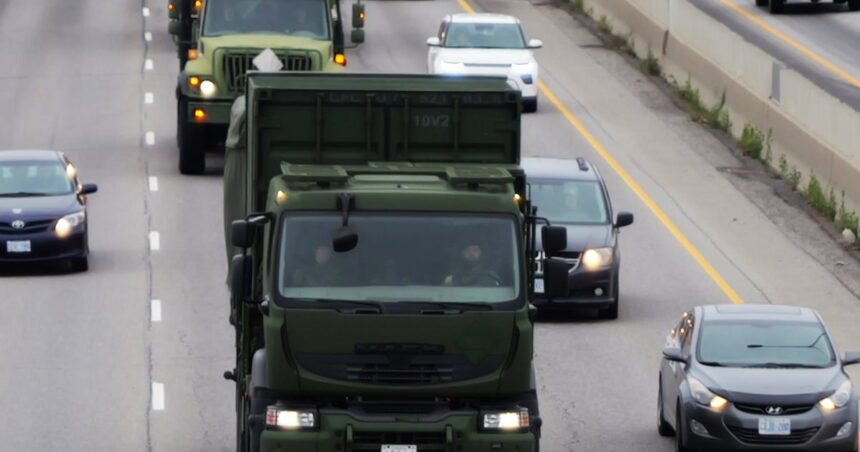Commuters along Ontario’s busiest highway corridors may encounter an unusual sight this week as Canadian Armed Forces vehicles conduct a large-scale training exercise across Southern Ontario. The military presence, while potentially startling to some drivers, represents a critical readiness operation designed to enhance national emergency response capabilities.
Beginning today, military convoys will traverse portions of Highway 401 and the Queen Elizabeth Way (QEW), moving between Canadian Forces Base Borden and other strategic locations throughout the region. Defence officials have confirmed the training will involve approximately 150 personnel and dozens of military vehicles, including armored personnel carriers and support units.
“These exercises are essential for maintaining operational readiness,” explained Lieutenant Colonel Margareta Chen, exercise coordinator. “By conducting training in real-world environments rather than solely on military bases, our forces develop the practical skills needed to respond effectively during domestic emergencies.”
The Canadian Armed Forces regularly conduct such exercises to prepare for potential domestic deployment scenarios, including natural disaster response, infrastructure protection, and civil support operations. Such training has proven invaluable during recent years when military personnel were deployed to assist with pandemic response, wildfire evacuations, and flood relief efforts across multiple provinces.
Motorists need not be alarmed by the increased military presence, officials emphasized. The convoys will adhere to all civilian traffic regulations and have coordinated their movements with provincial transportation authorities to minimize disruption. Travel will primarily occur during off-peak hours, though some daytime movement is unavoidable.
The Ontario Provincial Police have issued a public advisory asking drivers to exercise caution when encountering military vehicles. “Please maintain safe distances from convoy vehicles and refrain from abrupt maneuvers when passing military formations,” the OPP statement reads. “These vehicles often travel at consistent speeds in tight formations for operational reasons.”
The exercise highlights the dual mandate of Canada’s armed forces to maintain both international deployment capabilities and domestic emergency response readiness. This balance has become increasingly important as climate-related disasters and other domestic emergencies have required more frequent military assistance to civil authorities.
“What many Canadians don’t realize is that domestic operations now constitute a significant portion of our overall mission,” noted Dr. Eliza Thornton, defense policy analyst at the University of Toronto. “The skills being practiced this week could be deployed next month in response to floods, fires, or other emergencies requiring rapid mobilization of personnel and equipment.”
The training exercise is scheduled to conclude on Friday, with most vehicle movements completed by Thursday evening. Residents near major highways may notice increased helicopter activity as aerial components supplement the ground operations.
As Canada faces growing climate uncertainty and infrastructure challenges, how prepared are we as a nation to leverage military capabilities effectively during domestic crises while maintaining our international defense commitments?











